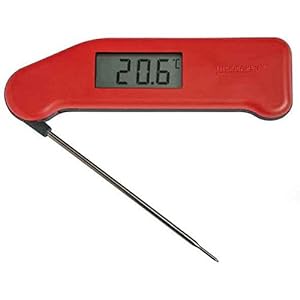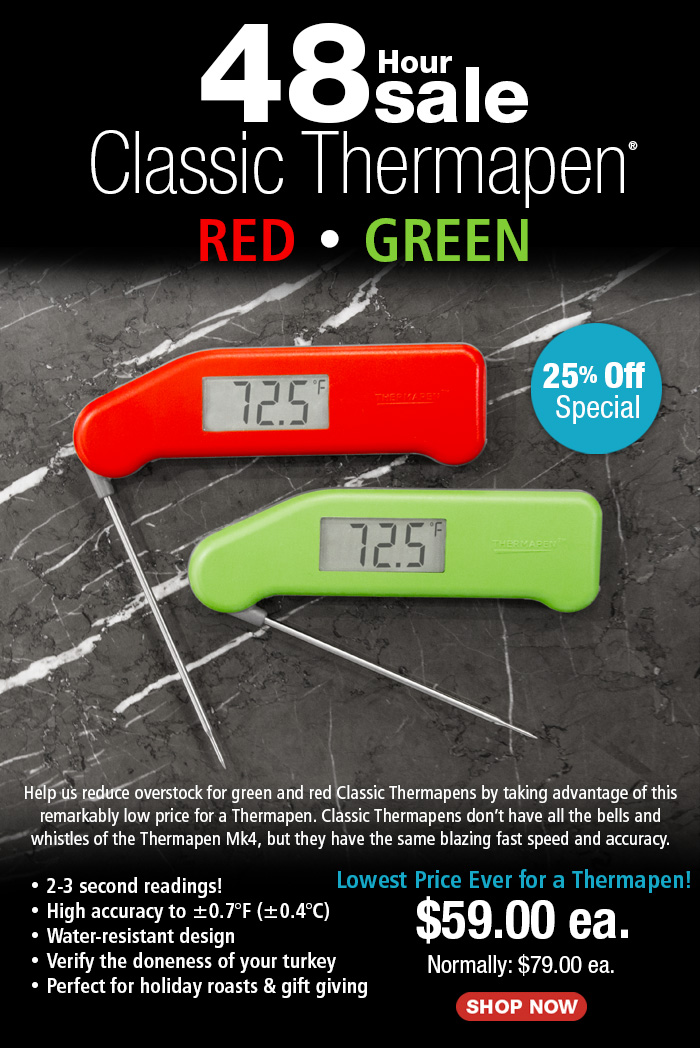bstacy1974
Well-Known Member
I have trust issues. Especially when it comes to thermometers.
I have 4 different devices I use throughout my brewing process. Before brewing last night, I did a calibration check on the 3 digital therms. The 4th is a dial therm that came with my original brew kit and I don't really use it anymore. Granted, none of my thermometers are name brand, expensive devices. I've kinda just dealt with the plus or minus error by writing it on the device and adjusting accordingly.
Two of the digitals read 33F in a crushed ice water bath. The other is a K thermocouple attached to my brew controller. It read ~2F high, so I adjusted it down to 32.0F. I didn't check the dial.
Fast forward to strike water heating.
K thermocouple =173.4F (target strike water temp)
Digital therm 1 = 178F
Digital therm 2 = 176F
Dial therm = 180F
Oh boy. Not helping my trust issues. I pressed on with the mash. After 10 mins, I checked the two digitals in the mash tun. (The thermocouple is mounted in my boil kettle, and I didn't want to take it out again.) Both read 154F, which is exactly the mash temp I was shooting for. If I trusted these readings, I would say my actual temp is 153F as both read +1F high in the ice water bath. But, the strike water temps were so far off, I don't trust either thermometer and have no clue what my actual mash temp was.
I've always used an ice water bath for calibration or verification because it seems to be more stable than calibrating at 212F. I feel that uneven heating or hot and cool spots can form in a boiling pot of water that could effect calibration. I may be completely wrong on this, btw.
That's the background for a simple question, how do you calibrate and verify your thermometers?
I have 4 different devices I use throughout my brewing process. Before brewing last night, I did a calibration check on the 3 digital therms. The 4th is a dial therm that came with my original brew kit and I don't really use it anymore. Granted, none of my thermometers are name brand, expensive devices. I've kinda just dealt with the plus or minus error by writing it on the device and adjusting accordingly.
Two of the digitals read 33F in a crushed ice water bath. The other is a K thermocouple attached to my brew controller. It read ~2F high, so I adjusted it down to 32.0F. I didn't check the dial.
Fast forward to strike water heating.
K thermocouple =173.4F (target strike water temp)
Digital therm 1 = 178F
Digital therm 2 = 176F
Dial therm = 180F
Oh boy. Not helping my trust issues. I pressed on with the mash. After 10 mins, I checked the two digitals in the mash tun. (The thermocouple is mounted in my boil kettle, and I didn't want to take it out again.) Both read 154F, which is exactly the mash temp I was shooting for. If I trusted these readings, I would say my actual temp is 153F as both read +1F high in the ice water bath. But, the strike water temps were so far off, I don't trust either thermometer and have no clue what my actual mash temp was.
I've always used an ice water bath for calibration or verification because it seems to be more stable than calibrating at 212F. I feel that uneven heating or hot and cool spots can form in a boiling pot of water that could effect calibration. I may be completely wrong on this, btw.
That's the background for a simple question, how do you calibrate and verify your thermometers?





























![Craft A Brew - Safale S-04 Dry Yeast - Fermentis - English Ale Dry Yeast - For English and American Ales and Hard Apple Ciders - Ingredients for Home Brewing - Beer Making Supplies - [1 Pack]](https://m.media-amazon.com/images/I/41fVGNh6JfL._SL500_.jpg)































